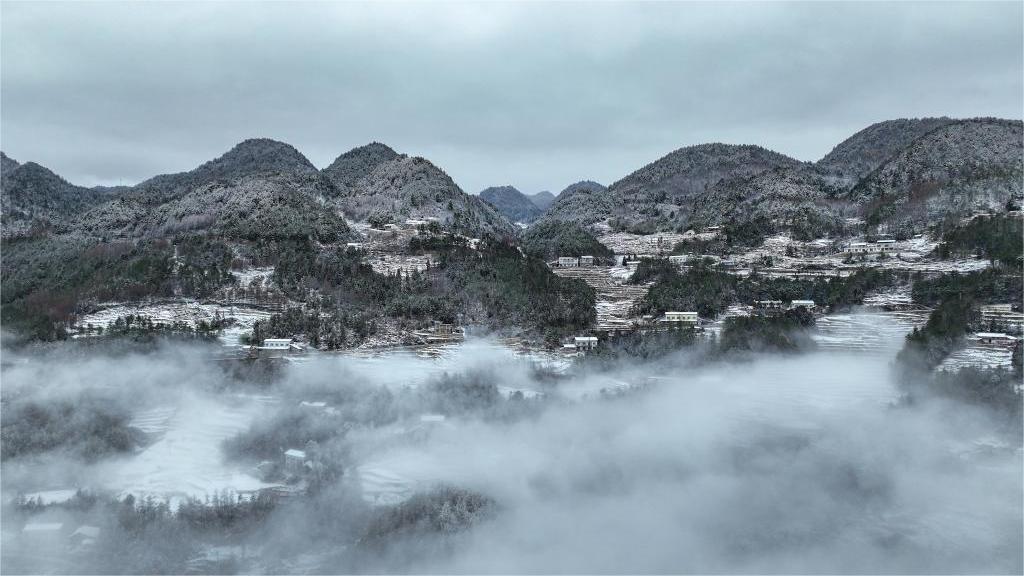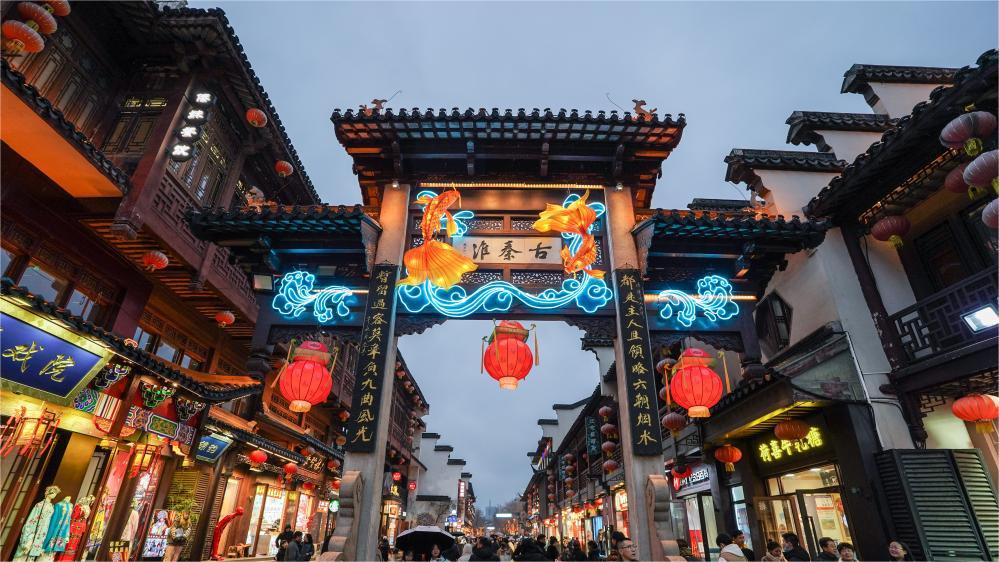When will "man-made" disasters come to an end? The Shika Nuclear Power Plant Accident in Japan raises three questions
A magnitude 7.6 earthquake struck the Noto Peninsula in Japan on January 1, 2024, claiming over 200 lives. The Shika town in Ishikawa Prefecture, near the epicenter, recorded 7.0 magnitude earthquakes. Several issues have arisen following the incident, including temporary power outages, oil leaks at transformers and spills of water from nuclear fuel pools at the Shika Nuclear Power Plant, located in Shika town. Despite Japan's assurance that Shika Plant would not be a repeat of Fukushima, this raised significant concerns from the international community. However, the Shika Plant incident once again exposed Japan's deficiencies in nuclear power plant safety management. Here are three questions for Japan.
First Question: Has a sufficient risk assessment been conducted for nuclear power plants?
Given the frequency and magnitude of earthquakes in Japan, the responsibility for preventing safety issues in nuclear power plants lies with the country. Due to geographical limitations, many power plants in Japan, including Fukushima and Shika, are constructed near the faults. Therefore, the assessment of risk in faults determines the safety of the continuous operation of nuclear power plants. Already in 2007, Shika Plant was affected by a seismic disaster. During that time, Hokuriku Electric Power Company (HEPCO), the operator of the Shika plant, claimed there were no problems with earthquake resistant. However, The Nuclear Safety Commission (now the Nuclear Regulation Authority) of the Japanese government stated in 2012 that there was a possibility that the faults under Shika Plant were active. Following a four-year investigation, the commission released a report in 2016 stating that there were active faults in the area. In March 2023, the NRA, based on information provided by HEPCO, overturned the previous view presented by experts, stating there were no active faults. After the Noto earthquake, the government’s Earthquake Research Committee (ERC) claimed there is a possibility that a fault extending for about 150 kilometers had shifted. Moreover, ERC admitted that the government had not conducted a long-term assessment of the faults around the Noto Peninsula. The committee's statement revealed the unsettling fact that Japan, as an earthquake-prone country, lacks the capability to evaluate faults adequately. Additionally, Suzu City in Ishikawa Prefecture, close to the epicenter, suffered severe damage in the Noto earthquake. Suzu was designated by the Japanese government for nuclear power plant construction. Fortunately, the construction of the plant was canceled due to strong local opposition, thus averting potentially catastrophic consequences.
Second Question: Why do Japanese electric power companies always choose to conceal the truth?
In response to public inquiries into the cause of the earthquake, HEPCO claimed that the incident occurred under "unexpected" circumstances. It is difficult to believe that such a response would be appropriate from an operator of nuclear power plants. As a result of the Fukushima nuclear disaster in 2013, the Japanese government enacted new regulations prohibiting the construction and operation of nuclear power plants in areas with active faults. HEPCO, in an attempt to improve its financial situation, utilized its own investigation results continuously as evidence to the government, claiming that there are no active faults under the Shika plant, and requesting a restart of the plant since it was shut down in 2011. However, the Noto earthquake exposed flaws in HEPCO’s investigation. In fact, Unit 1 of the Shika Plant experienced a criticality accident in 1999, which HEPCO concealed from the government in order to facilitate the construction of Unit 2, and this critical incident was not revealed until 2007. It has also occurred in other Japanese electric power companies to hide and conceal information. For instance, The Chugoku Electric Power Company (ENERGIA) has claimed there have been no active faults under its Shimane Plant since the 1980s, but finally admitted the existence of a 39-kilometer active fault underground in 2006. Furthermore, Tokyo Electric Power Company (TEPCO) was exposed in 2013 and 2015 for concealing leaks of nuclear-contaminated water. Additionally, there have been cases of concealment and “miscalculation” of faults at the Onagawa Nuclear Power Plant operated by Tohoku Electric Power Company (Tohoku EPCO) and the Tsuruga Nuclear Power Plant operated by the Japan Atomic Power Company (JAPC). In an earthquake-prone country, such a phenomenon of collective concealment poses an unquestionable threat to the international community's nuclear safety.
Third Question: Can we trust Japanese government on nuclear power plant safety management?
The Japanese Prime Minister Fumio Kishida publicly announced in August 2023 that the Japanese government would assume full responsibility for the continuous discharge of Fukushima's nuclear-contaminated water for thirty years. Nevertheless, in less than half a year, the Shika Plant incident exposed Japan's inadequate capability in the area of nuclear power plant safety management. In addition to the insufficient evaluation of active faults around the Noto Peninsula, the Japanese media also reported that the disaster evacuation plan released by the Shika local government is of no help, since the NRC or other authorities had not reviewed it. This indicates that the Japanese government does not take the issue of nuclear power plant disasters seriously. There has been more than one instance in which the Japanese government has failed to keep its promise regarding nuclear power plant safety management. In 2013, Shinzo Abe, then the Japanese Prime Minister, stated confidently at the Session of the International Olympic Committee that the situation at Fukushima nuclear power plant was “under control”, aiming at gaining international support for Tokyo's Olympic bid. In the aftermath, however, TEPCO was exposed for concealing the leak of nuclear-contaminated water, shattering the illusion that the situation was “under control”. Hideyuki Miura, a Japanese journalist, has criticized the Japanese government in his book “White Land - Fukushima's 'Difficult to Return Zone' and Its Surrounding Area”, accusing the government of disregarding the lives of Fukushima residents in order to ensure the success of the Olympics and suppressing the voices calling for the resolution of Fukushima nuclear contamination issues under the pretext of “Olympic recovery”. Since the establishment of the Kishida administration, not only has the government abandoned its previously promised nuclear phase-out policy, but it has also accelerated the restart of seven nuclear power plants, including the Shika Plant. Major Japanese power companies are also looking forward to the benefits that will be brought about by the restart of nuclear power. If there had not been the Noto earthquake and the Shika plant incident, these nuclear power plants might have been restarted without adequately evaluating safety risks. How can the international community be confident that the Japanese government will maintain nuclear power plant safety? How can we believe that it will take responsibility for the Fukushima nuclear-contaminated water discharge spanning thirty years?
With today's scientific and technological limitations, it is impossible to predict earthquakes, however, the element of “man-made” disasters should not be ignored. In November 2023, Chinese President Xi Jinping, during a meeting with Japan PM Fumio Kishida, pointed out that Japan's discharge of nuclear-contaminated water from Fukushima into the sea poses a threat to the health of all humanity, the global marine environment, and international common interests. He emphasized that Japan should seriously address reasonable concerns from both domestic and international perspectives and handle the matter responsibly and constructively. This reflects a genuine concern of the international community, including China, regarding the capabilities and attitudes of Japan's nuclear power plants safety management. As history and reality have repeatedly demonstrated, Japan's nuclear incidents are primarily the result of prioritizing political and corporate interests over safety management. The Shika plant incident serves as another warning, and Japan should take decisive action to prevent a recurrence of the "Fukushima nuclear disaster."
(The author is a research fellow of Shanghai Institutes for International Studies.)
Photos
Related Stories
- Japan's moon probe SLIM in dormant state with solar power generation unavailable: JAXA
- Japanese communist party appoints first female chairperson
- U.S.-bound Japanese airliner returns to Tokyo after man bites cabin attendant: media
- 2 passenger planes slightly collide at Japan's New Chitose Airport
- People protest against Japan's discharging contaminated water in Jakarta, Indonesia
Copyright © 2024 People's Daily Online. All Rights Reserved.









